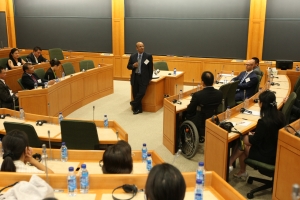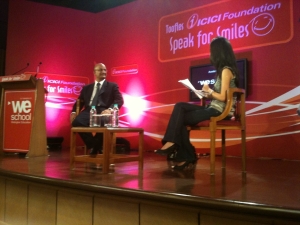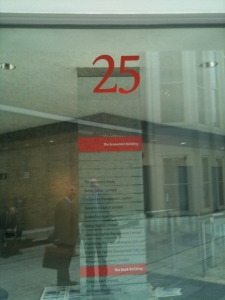 This week I was on a panel of marketing experts at the Meeting Planners International (MPI) New England chapter meeting, discussing the challenges of promoting meetings and events in the current economic climate. There was a good sized audience (which means that at least meeting planners still go to meetings). They were there to turn their angst into action and ironically they were their own proof of why we need meetings and conferences – to engage face-to-face with one another.
This week I was on a panel of marketing experts at the Meeting Planners International (MPI) New England chapter meeting, discussing the challenges of promoting meetings and events in the current economic climate. There was a good sized audience (which means that at least meeting planners still go to meetings). They were there to turn their angst into action and ironically they were their own proof of why we need meetings and conferences – to engage face-to-face with one another.
Of course in a world turned upside down where business is being tarred and feathered daily in the media, what once was good is now bad and meeting planners and their suppliers are among a growing population of collateral damage. I knew that the moment I turned on Good Morning America last month and saw ABC’s Brian Ross reporting on the extravagant parties that executives of Bank of America participated in at the 2009 Bob Hope Chrysler Golf Classic (complete with a hidden camera walking through the parties – ouch). Further proof is Senator John Kerry’s request in February that any company receiving TARP funds should have their meetings approved by an oversight committee. On March 5 he introduced new language into the funding bill to limit “luxury expenses”. Those are yet to be defined but a fellow panelist mentioned that some destination hotels had begun removing the word resort from their name to make it more palatable as a meeting spot.
These kinds of extremes are indicative of an angry public and I can’t personally disagree having overseen some very extravagant meetings and events in my career. I know how expensive they can be and how entitled some senior executives can be. Make no mistake, we are in a period of collective national venting and business at the center. We are experiencing it at Harvard Business School where MBAs have come under fire as the root cause of the financial crisis. How come we didn’t see it coming? Did we forget to teach our students about ethics? Fortunately, there are some thoughtful perspectives emerging and as I shared with the MPI folks, the same will come to pass for them.
So what do we do in the meantime, they asked. Hunker down and wait? Fold up the tent? Of course not. This downturn, like others, will have an impact on how we market and that includes the kinds of events and meetings we host. But they will continue to be an important part of the mix because of the human factor. With that in mind, here are some thoughts that surfaced from the panelists about how to manage through the current climate and how to reinvigorate the appetite for meetings and events.
– Use this time constructively to network and build relationships with customers, suppliers and peers. Being at the meeting was a good start.
– Understand your company/client’s strategy and know how and why the meeting helps to achieve their goals better than any other method (e.g. webinars, publications).
– Dial it down. The things that have upset people most have been easily correctable – the corporate jets, the spa retreats, the $300 plates. Events will be more acceptable if there are explicit goals tied to them that are shared in advance if appropriate, with key stakeholders like employees, customers, shareholders. Check out Meetingsmeanbusiness.org for more in this.
– Make your event matter. There is a growing trend in business of giving back on behalf of clients and customers. We’ve all received holiday cards noting a charitable donation in our name. Events that benefit a charity or where activities include some kind of community service are instantly more palatable to individuals and employers.
– Keep looking for new ideas. There are many websites out there with great ideas for how to manage this down turn. Here is one I like.
Lastly, I told this group what I’ve told my own team . . . this is our time to shine. We’ll do that by showing how innovation and creativity can carry the day. The extended marketing team, including meeting planners and their suppliers, needs to be generative with ideas and action to show their organizations that our contributions are more important now than ever.
Filed under: Uncategorized | 1 Comment »













 This week I was on a panel of marketing experts at the
This week I was on a panel of marketing experts at the  In their self-titled debut in 1980, new wave sensations Missing Persons cynically asked . . . “What are words for when no one listens anymore?” We could argue the merits of the song but the question is a good one. Of course in today’s world of 24 hour news cycles where sensationalism wins over substance and full length news articles are reduced to 140 character “tweets”, words must be carefully chosen.
In their self-titled debut in 1980, new wave sensations Missing Persons cynically asked . . . “What are words for when no one listens anymore?” We could argue the merits of the song but the question is a good one. Of course in today’s world of 24 hour news cycles where sensationalism wins over substance and full length news articles are reduced to 140 character “tweets”, words must be carefully chosen. another luminous log. And my Blackberry is dutifully vibrating towards the edge of the table with new emails.
another luminous log. And my Blackberry is dutifully vibrating towards the edge of the table with new emails.